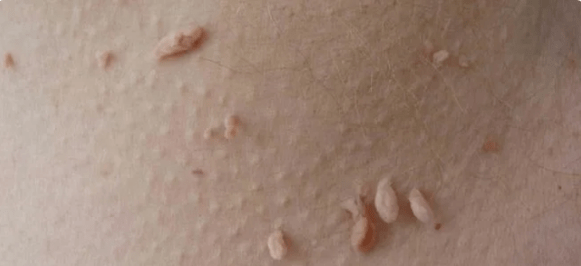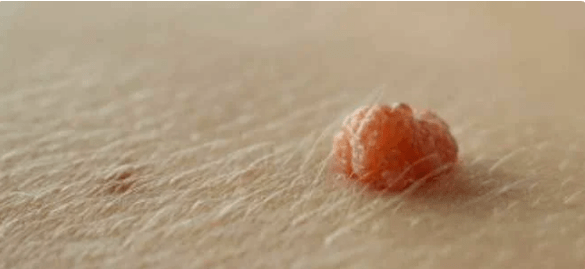
Human papillomavirus (HPV) is the general name of a group of viruses that cause various diseases.More than 100 types are known.Pathogens are common all over the world.To avoid infection, it is important to know how to spread the human papillar virus.
What is HPV infection?
HPV infection is a group of viral diseases caused by papillomavirus.Currently, research and description have been carried out on 100 types of viruses.Scientists have long been studying the morphology of pathogens, which makes it possible to determine which virus type of virus causes what type.Additionally, a set of HPVs with high risk was assigned.
Since HPV is mainly impressed by the sexual system, gynecologists are very concerned about research on the problem.When it comes to what HPV is in gynecology, it is necessary to point out the high risk of developing cervical oncology.Experts found that the virus, more precisely, the 16th and 18th types, caused the development of tumor processes in the female reproductive system.
HPV-transmission and infection pathways
Papillomavirus is known for its resistance to environmental factors and therefore has long maintained the activity of the external environment.This explains the ability of pathogens to be universal.However, the transmission of HPV airborne is not directly transmitted.When talking about how papillomavirus spreads from person to person, doctors showed direct contact with the skin and mucous membranes of the viral vector.
HPV transmission paths are diverse:
- sex
- Contact the house;
- Vertical.
The most common way to transmit HPV

After hearing this type of pathogen, patients are often interested in doctors: whether the human papillomavirus is sexually transmitted.Doctors point out that this method is the most common.According to statistics, about 70% of people live an active sex life are carriers of papillomavirus.In this case, infection can occur repeatedly throughout life.
A few months after the start of the active activity, most men and women were infected with HPV.It is worth noting that HPV is usually attributed to sexually transmitted infections, but is infected without penetration due to gender.Contact with viral vectors can lead to infection.
Doctors also use HPV to call the following infection methods:
- kiss;
- oral sex.
HPV-Infection Methods in Daily Life
Some infectious disease experts distinguish the family path of HPV transmission.The percentage of virus transmission is small, but this possibility cannot be completely ruled out.The virus can be kept active for a period of time, entering the swimming pool, bathroom, and therefore may become infected in public areas.
Infections in daily life occur when kissing, using affected HPV personal hygiene products.In this case, the risk of infection is increased:
- Decreased immunity;
- Violating personal hygiene rules.
Risk of HPV infection
As sexual activity begins, the likelihood of HPV infection increases dramatically.This transmission path is considered the primary path.At the same time, experts distinguished many factors, which several times increased the risk of infection:
- the early onset of sexual activity;
- Change sexual partners frequently;
- Ignore contraceptive methods.
In addition, it is necessary to say about the possibility of childhood infection.In most cases, HPV is transmitted from the mother to the child during childbirth.Infection in the baby occurs when promoted along the birth tube.It is easier for children to tolerate infections, but they do not actually show up.Additionally, since the antibodies are received, it can be used spontaneously with breast milk.
How about HPV infection?
HPV infection is direct contact with the mucosa and the skin of the genitals.During intercourse, microcracks and damage to the mucosa often occur, which only increases the risk of HPV infection.At the same time, there are some differences in the mechanisms of virus transmission between men and women.
How does human papillomavirus spread?

The possibility of HPV infection in men is directly dependent on the number of permanent partners.Frequent random intercourse increases the likelihood of multiple infections.At the same time, in most cases, the person himself does not doubt the existence of HPV virus in his body.As a result, the virus was further spread.In 90% of sexual relationship cases, an infection of a partner occurred, which was once absolutely healthy.
How is human papillomavirus delivered to women?
There is no difference in the HPV infection mode in women and the characteristics of men.First of all, it's sex.However, certain factors increase the risk of infection in women.
Among them, the gynecologist determined:
- the early onset of sexual activity;
- Change sexual partners frequently;
- abortion;
- The history of trauma;
- Gynecological diseases;
- pressure;
- Receive oral contraceptive pills for a long time.
Is the human papillomavirus transmitted to children?
Knowing the presence of HPV in the body, women planning to get pregnant want to know if the human papillomavirus in their mothers will be transmitted to the baby.Experts say there is a risk of infection in children.However, HPV is rarely observed in children, and the infection method is different from that in adults.The transmission of infection is more common in the fetal promotion phase along the birth tube: the virus from the mother's mucosa is transmitted to the baby.
It is worth noting that the risk of this infection is very small.In most cases, the baby's body manages to get rid of HPV during the first 2-3 months of life.This happens due to intake of the baby's organisms and breast milk.The main danger of HPV to infants is the damage to the respiratory tract - the occurrence of polyps.This is rare and is considered an exception.
How much does HPV occur after infection?
To understand how human papillomavirus spreads, many patients are interested in the manifestation of the first symptoms.Doctors cannot clearly state how quickly it shows after HPV infection.
Identify the following factors:
- the patient's age;
- There is a chronic inflammatory process in the body;
- The state of the immune system.
In fact, the clinical manifestations of HPV are different.Changes in affected cells can be observed for weeks and months.In some cases, the first lesions and genitals on the skin of the groin were discovered a year after the papillomavirus entered the body.The exact time of HPV in vivo can be determined based on laboratory tests.
Signs of HPV infection
Symptoms of HPV infection are manifested by genital lesions.In most cases, the virus can cause characteristic skin lesions.The patient recorded the appearance of thick nipples and accipitary warts.On the outside, these products resemble cauliflower, so it is difficult to confuse them with other skin manifestations.
In women, the light pink light pink growth is localized:
- in the labia minora;
- in the groin;
- on the clitoris;
- near the outer hole of the urethra;
- On the eve of the vagina.
In some cases, if a woman practices anal sex, condylomas are formed in the anus.The intense growth of this strata leads to the occurrence of bleeding and pain during sexual intercourse.In men, this formation is located in the pubic region, the vagina, and less penis surface.
HPV vaccination after infection
Even those who know how human papillomavirus spreads, they are not always able to avoid infection.After treatment, in order to eliminate HPV reinfection and prevent the development of recurrence, the doctor was vaccinated with papillomavirus.Vaccination prevents the development of viral infection for 15 years or more.















